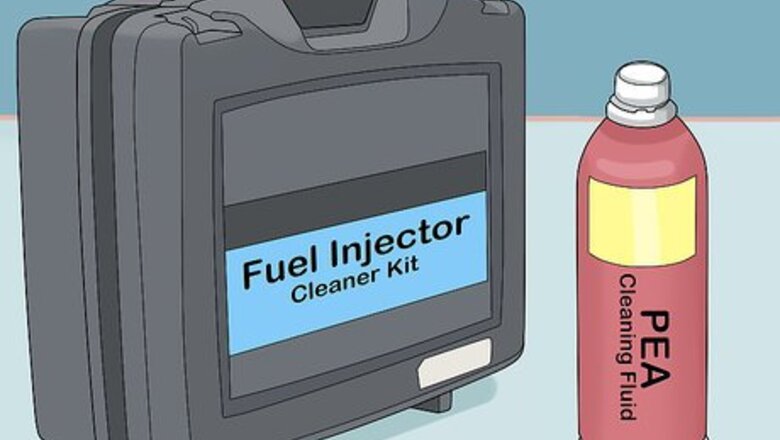
views
Using a Fuel Injector Cleaning Kit
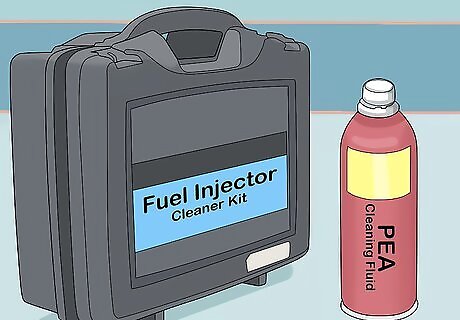
Purchase a fuel injector cleaner kit with a PEA cleaning fluid. Look for a cleaning kit that is suitable for your type of vehicle. Each kit should come with a canister of fuel injector cleaner and a hose that attaches to the fuel injector and fuel rail. For the best results, opt for a cleaning fluid that contains polyetheramine (PEA), which will dissolve thick carbon deposits more effectively than other ingredients. Most fuel injector cleaning kits can be used for any type of vehicle, but you should read the package or ask a store clerk to make sure. You can purchase a cleaning kit in an auto store or online. Full kits usually cost just under $100 each. You can also purchase the items in fuel injector cleaner kits separately. Cleaners that contain polyisobutene (PIB) will prevent new deposits but will not remove existing ones. Cleaners containing polyisobutylene amine (PIBA) will remove and prevent buildup, but they are milder and less effective than PEA cleaning fluids.
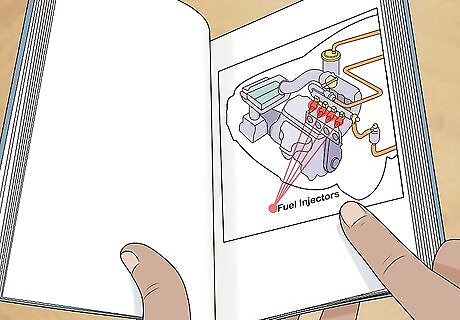
Review your vehicle's engine layout to locate the fuel injectors. Different types of engines have different layouts, so your fuel injectors may be difficult to find. Take a look at your vehicle's manual to determine where the fuel injectors are located. You can also look up your vehicle online to find this information. The fuel injectors will be located under the hood of the car.
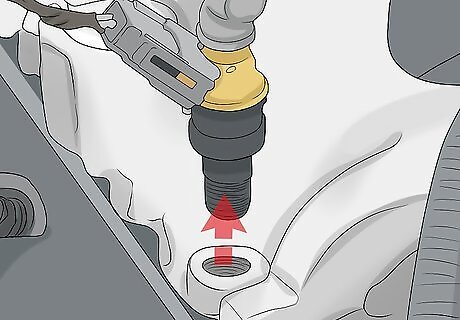
Disconnect the fuel pump from the fuel injectors. Brace the fuel pump, which should be located on the side of the engine. Gently pull out the fuel injectors to detach them from the pump. Once they are removed, connect the fuel return line to the fuel pump so the gas inside it returns to the tank while you're cleaning the injectors. You can also insert a U tube to funnel the gas into the tank. Follow the vehicle-specific instructions in your vehicle's manual if you aren't sure how to disconnect the fuel injectors properly.
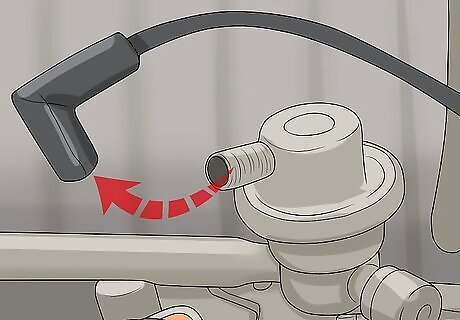
Disconnect the pressure regulator vacuum line if you have one. Locate the fuel pressure regulator if your vehicle has one and look for the vacuum line attached to it. Brace the vacuum line just above where it connects to the regulator. Gently pull it out to disconnect it. Check your vehicle manual to see if you have to do this step. The regulator will usually be located just behind the fuel injectors.
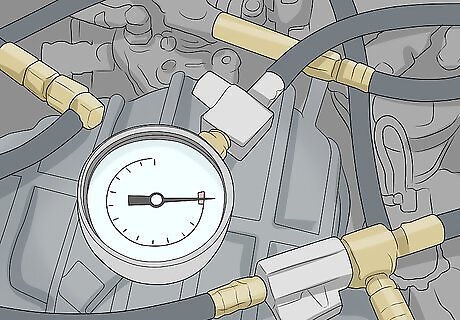
Connect the cleaning kit to the fuel port. Locate the fuel port, which should be attached to the fuel rail in your engine. Follow your cleaning kit's detailed directions on how to attach the hose and fitting to the port. This will vary between kits, but you should focus on making sure that the fitting is attached properly to both the hose and port. Make sure the injectors have no exposure to fuel as the cleaner is flammable.
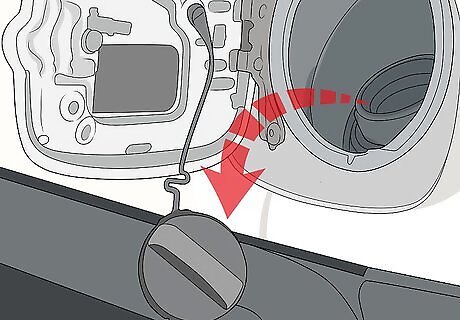
Remove the cap from the fuel tank to prevent pressure buildup. The cleaner will remove debris and grime by using a burst of pressure to inject a cleaning solvent into the fuel injectors. Be sure to remove the fuel tank cap before starting the cleaning. This will keep excessive pressure from building up, which could cause combustion.
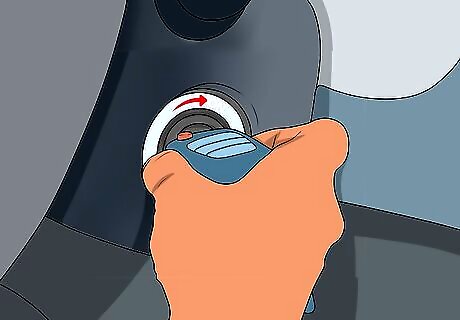
Turn the vehicle to let the cleaning fluid into your injectors. Double-check that your fuel pump is turned off. Start your engine and let it run. The motor will stop running on its own once the cleaning fluid is all used up. It usually takes 5 to 10 minutes for the cleaner to cycle through the injectors and get used up.
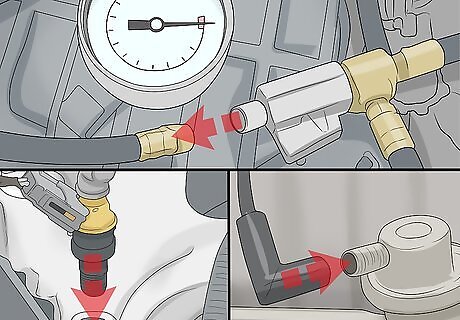
Remove the cleaning kit and reattach your pump and injectors. Remove the hose and fittings from your fuel port. Reattach the fuel pump power supply and the pressure regulator vacuum hose. Put the fuel cap back into place.
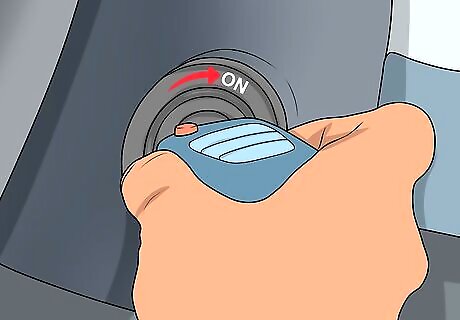
Turn the vehicle on again to make sure the fuel injectors work. Test your vehicle to see if you've reattached everything correctly by starting the engine. Listen for any abnormal noises, which may indicate a problem. Drive the vehicle a short distance to make sure it runs smoothly. If you followed the procedure correctly and notice abnormal noises, contact a professional auto mechanic.
Keeping Fuel Injectors Clean
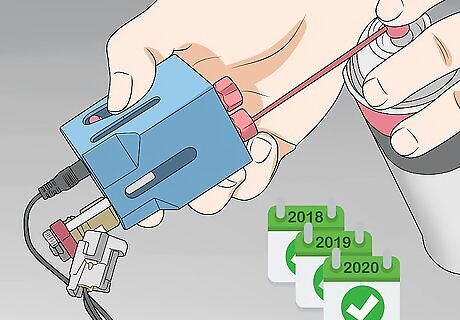
Clean your fuel injectors about once a year. Using a fuel injector cleaning kit yearly can help prevent the buildup of harmful deposits. If you clean less regularly, carbonaceous deposits can grow and harden, hindering the function of your vehicle. Set a yearly reminder on your phone or computer or time this yearly cleaning with a similar task, like your vehicle's yearly oil change. If you do not use your vehicle often, you can clean the fuel injectors every 15,000 miles instead.
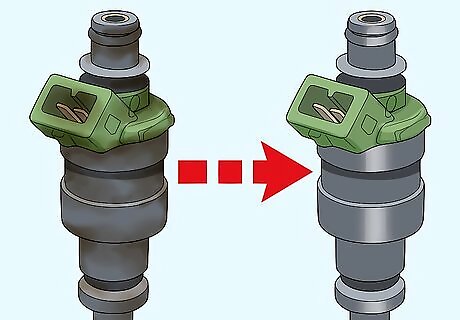
Replace your fuel injectors if they show signs of malfunction. Fuel injectors may sometimes need to be replaced entirely to ensure that your vehicle functions properly. If you notice signs that your fuel injectors may be malfunctioning, bring your vehicle to a mechanic to get checked as soon as possible. These signs may include: Your cylinders misfiring. The "check engine" light turning on frequently. Your vehicle stalling or not starting with a full tank of gas. Smoke.
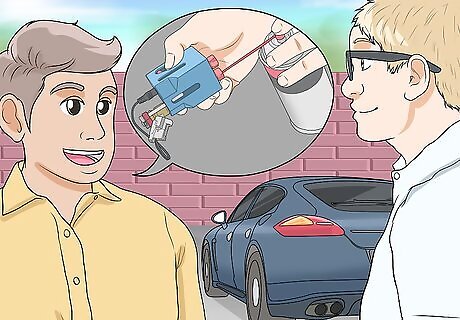
Get a professional fuel injector cleaning if you can't do it on your own. If you are unable to perform yearly cleanings on your own, do not skip the process entirely. Bring your vehicle to have the fuel injectors professionally cleaned every year as needed. Contact local repair shops for price estimates before deciding where to bring your car for the cleaning. This will be costly but it will prevent problems with your engine that may prove to be costly in the future.




















Comments
0 comment